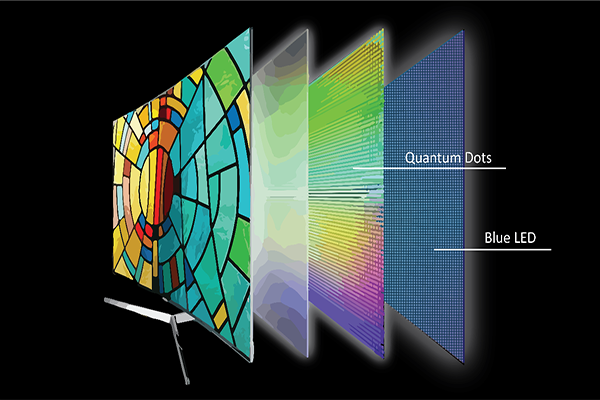Exploring the latest trends in OLED technology! OLEDs, or Organic Light-Emitting Diodes, have been revolutionizing the display industry with their vibrant colors, high contrast ratios, and energy efficiency. In this article, we will delve into the cutting-edge advancements and emerging applications that are shaping the OLED landscape. OLED panels are attractive in high-end products, particularly in the television and mobile markets, ensuring low power consumption, high contrast, and strongly improved lifetime compared to early-generation OLEDs. Why OLEDs? A: To break the tedium looks of consumer electronics is the one of the big reason; B: The need for revolutionizing DISPLAY Tech. OLED display provides a better viewing experience than LCD in several aspects by offering better viewing angles, deeper blacks and increased battery life along with other features. Brands also pushed OLED displays as a differentiating factor due to the leaner and more flexible panels that allow slimmer phones with curved displays in mid-priced and premium segments. Notably, the share of OLED displays in the above $250 wholesale price band reached 94% in Q1 2023.
1. Flexible OLED Displays:
One of the most significant trends in OLED technology is the development of flexible displays. These displays are made possible by using flexible substrates, allowing for curved or even rollable screens. This innovation opens up new possibilities for wearable devices, foldable smartphones, and futuristic designs that seamlessly integrate with our daily lives.
2. Transparent OLEDs:
Transparent OLEDs are gaining traction as a captivating display solution. These panels offer the unique ability to showcase content while maintaining transparency when not in use. This technology holds immense potential for applications such as augmented reality (AR) glasses, heads-up displays (HUDs), and interactive retail displays.
3. Improved Efficiency and Lifespan:
OLED technology continues to advance in terms of energy efficiency and lifespan. Manufacturers are constantly refining the materials and manufacturing processes to enhance OLED efficiency, resulting in reduced power consumption and longer-lasting displays. This progress not only benefits consumer electronics but also contributes to sustainability efforts by reducing energy consumption.
4. High-Resolution and HDR Capabilities:
OLED displays are renowned for their exceptional image quality, and the latest trends focus on pushing the boundaries even further. Manufacturers are introducing OLED panels with higher resolutions, such as 4K and 8K, to deliver stunning visual experiences. Additionally, HDR (High Dynamic Range) technology is being integrated into OLED displays, providing a wider range of colors and improved contrast for more lifelike images.
5. OLED Lighting:
Beyond displays, OLED technology is making strides in the lighting industry. OLED lighting panels offer a unique combination of thinness, flexibility, and uniform illumination. These panels can be used in various applications, including architectural lighting, automotive lighting, and even personalized lighting solutions.
SMARTPHONES DOMINATING THE OLED MARKET
OLED panels are noted to be more than 50% market share in the smartphone industry by 2023, thanks to a continuous decrease in costs. However, the OLED penetration rate in other applications like TV, laptop, and tablets is considerably less, standing at fewer than 3%. To boost the market penetration of OLEDs, panel manufacturers must tackle more demanding technical challenges, including improved specifications and the need for effective cost reductions to meet market expectations.
Recently, several key industry players have announced ambitious plans. Samsung declared an investment plan for its new G8.7 fab, BOE is planning its B16 project, JDI and HKC formed a strategic alliance for new technologies, and Visionox has an aggressive push into OLED technology and its market sectors. These developments are responding not only to Apple’s demand for medium-sized applications but also opening up new opportunities for OLED panels in other application markets. By 2025, it is anticipated that with the completion of new high-generation facilities, continued technology development, and lifespan improvement of materials, the market penetration rate of OLED products will be significantly bolstered.
CHINA – ABOVE THE MARKET CURVE
Currently, China’s AMOLED production capacity accounts for 43.7% of the global market, slightly less than the capacity share held by South Korean panel manufacturers. This capacity is divided among 4 to 5 Chinese panel factories. As the current AMOLED capacity is oversupplied and it’s expected that future production capacity will only continue to grow, companies focusing exclusively on OLED production will likely continue to grapple with financial pressures. It remains to be seen whether these companies will adopt a similar collaboration model to JDI and HKC given their varying technical capabilities. Through the development of new technologies and strategic alliances or integrations, they will aim to enhance their overall international competitiveness—a development worth watching over the next 3 to 5 years.

HOLE TRANSPORT MATERIALS
The fundamental role of hole transport materials (HTMs) is to control hole supply in OLED devices. Preferred HTMs show high hole mobilities (> 2 × 10–4 cm2 V–1) and well-aligned highest occupied molecular orbital (HOMO) energy levels to the adjacent emissive layer (EML). Additionally, they require good electron blocking ability, mainly enabled by the correct lowest unoccupied molecular orbital (LUMO) energy level, and prevention of exciton quenching at the EML interface. Thus, HTMs facilitate the control of charge balance within OLED stacks by their material property parameters. Well-balanced stacks are needed to achieve maximum performance within the stack-intrinsic efficiency lifetime (LT) trade-off.
LOW REFRACTIVE INDEX MATERIALS
High brightness is still one of the main targets of current display development. While this goal often is achieved by modifying the emitting layers, the adjacent transport layers are used to tune optimal charge balance for the emitter-host combination used. However, an additive efficiency improvement can be achieved using another knob. Introducing transport materials with reduced refractive index significantly improves the outcoupling of light.4 While this approach frequently has been discussed from a conceptual point of view, we show materials synthesized with low refractive index (RI) that also have HOMO energy values and mobilities fulfilling typical market requirements.
LATERAL CURRENT LEAKAGE
As OLEDs push into more display applications with increasingly challenging requirements, there is a growing interest in higher-resolution RGB OLED displays. This, coupled with a mounting relevance of tandem architectures in commercial OLED applications, results in a need for materials to suppress parasitic light emission from leakage current between subpixels, leading to an undesirable reduction in color gamut.
CONCLUSION
The world of OLED technology is evolving rapidly, bringing forth exciting trends that push the boundaries of what displays and lighting can achieve. From flexible and transparent displays to improved efficiency and high-resolution capabilities, OLEDs continue to captivate both consumers and industry professionals alike. As we embrace these advancements, we can look forward to a future where OLEDs play an increasingly prominent role in our daily lives.















